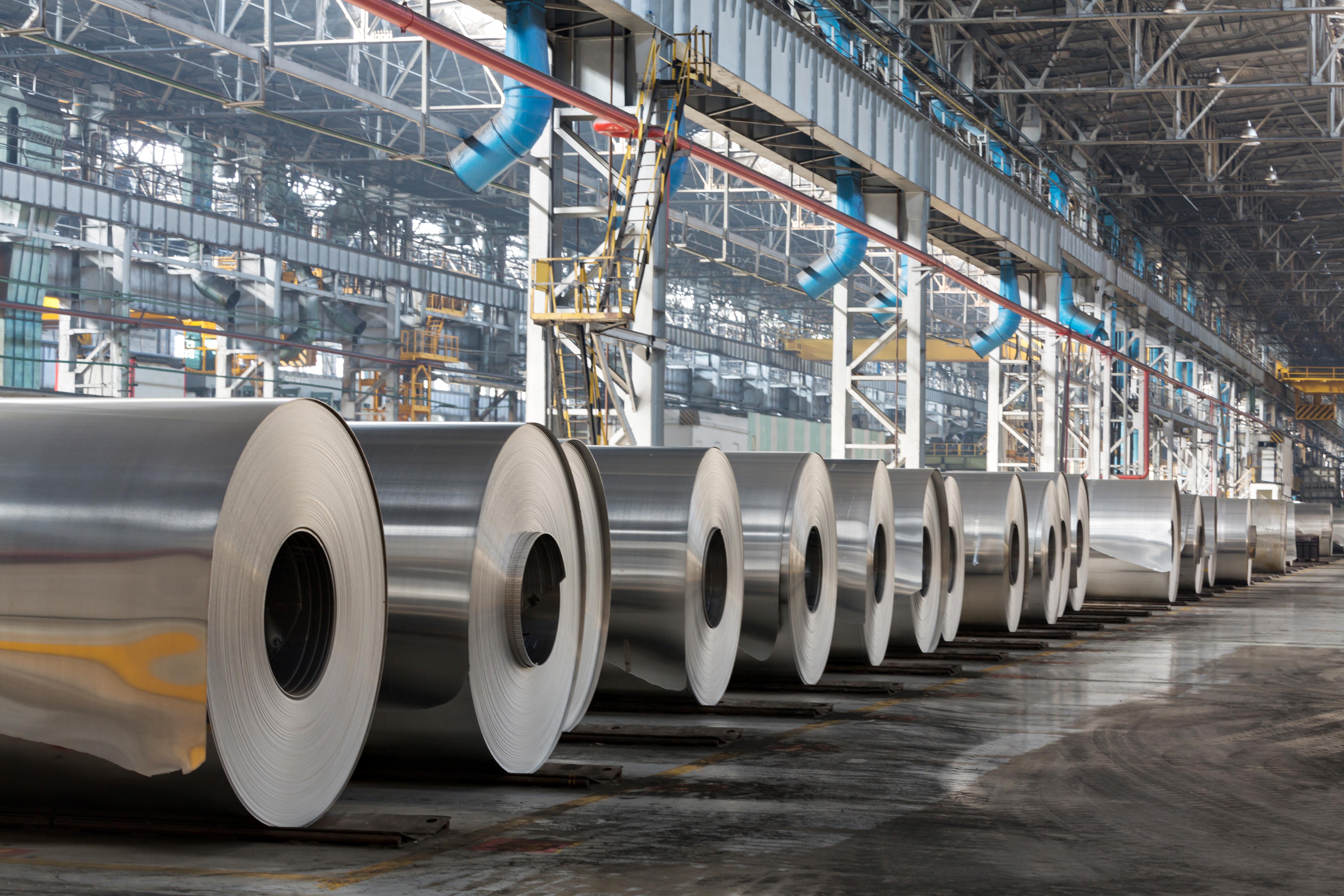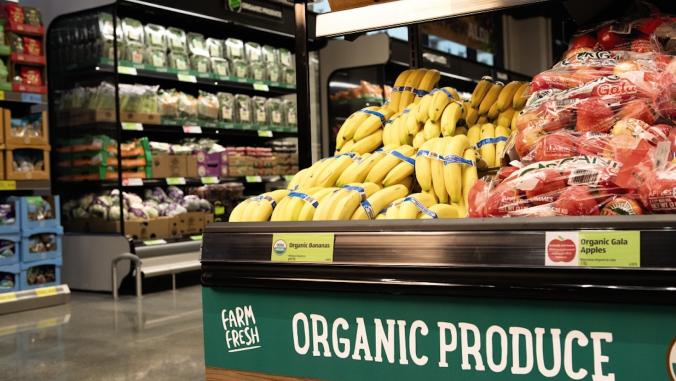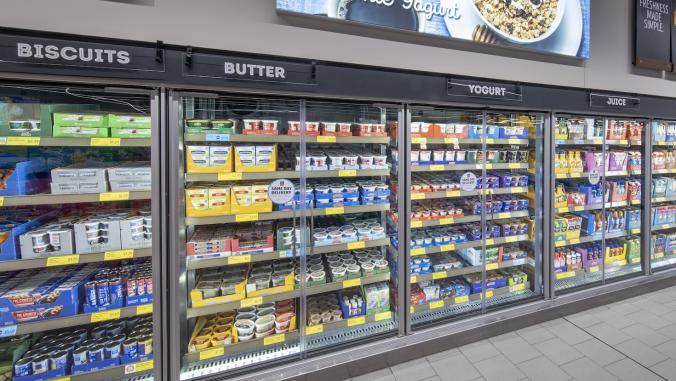As consumer products companies hunt for more sustainable packaging options, some — notably smaller brands — are turning to aluminum as an alternative to plastic. The big draw? Aluminum is touted by some manufacturers as "infinitely recyclable," and it certainly has a much higher recycling rate in the U.S. compared to plastic, according to the U.S. Environmental Protection Agency. But it might not be the sustainability silver bullet companies are counting on, according to industry experts.
Aluminum containers have exploded in popularity over the past few years. Ball debuted its Aluminum Cup in 2019 and brought those cups to Miami for Super Bowl LIV. When concerts were still a thing, r.Cup partnered with venues and artists so audience members could enjoy beverages out of a reusable cup. Then r.Cup went one step further by collecting, washing and sterilizing the cups, creating an entire service in the circular vein.
Trivium Packaging is also touting aluminum for its circular and sustainability credentials. The manufacturer is making aluminum packaging accessible for smaller eco-conscious water, cleaning and personal care companies including ThreeMain, RainForest Water in Costa Rica, Petal, By Humankind and Hand in Hand.
"[Trivium] went out of their way to accommodate a smaller business," said Bill Glaab, CEO of Hand in Hand Soap. "They really believed in what we were doing and helped us move forward. I don't think I would have been able to do it without them."
Many companies switching to aluminum packaging cite its recyclability as the main reason for the change. They are banking on the material’s high recycling rate to reduce the impact of their packaging.
Melissa Avino, director of purchasing and production at Heat Makes Sense, the parent company of Eva NYC, said it’s simple for consumers to remove the pumps or caps from its containers and throw the aluminum can in curbside recycling bins. She said that the plastic pumps, caps and triggers can be recycled through its partnership with TerraCycle.
Aluminum’s big draw for these companies is that the general population is comfortable and familiar with recycling aluminum. The material is America’s most successful recycling story, with recycling rates for cans hitting as high as 80 percent. The infrastructure has been built, adjusted and made as efficient and accessible as possible, according to these businesses.
"You enter into the whole aluminum industry," said Ariel Aizenman, CEO of RainForest Water. "Very rarely in Costa Rica do you see aluminum trash at a beach, because it has a market value."
Jenny Wassenaar, vice president of sustainability at Trivium, agreed: "The advantage of recycling is I can recycle aluminum in every state or in every country, without shipping it all over the place. You don’t have to create a separate supply chain for that, which is also, of course, a burden to the industry or to the environment."
The truth about aluminum recycling?
Experts dispute just how much aluminum is recycled. While some organizations and reports point to the 80 percent rate for aluminum cans, the total recycling rate for all aluminum is more like 50 percent in the U.S, and in 2018 it was only 35 percent for aluminum packaging, according to the EPA.
"The recycling system is completely broken," said Michael Martin, founder of r.Cup. "The infrastructure needs to be addressed, and I don’t see that happening in the near future. From my perspective, the resources required, the energy required, the negative impact from the production of the material, and then the broken recycling system ends up making [aluminum] the less sustainable choice when compared to other options."
According to a report by consulting firm Metabolic, of the approximately 90 billion aluminum cans used in the United States each year, only around half are recycled; the rest go to landfills.
Companies switching to aluminum packaging are addressing this problem with educational campaigns intended to increase the amount of aluminum that is recycled. Eva NYC created a landing page with information about recycling. And Hand in Hand uses QR code labels on its products that direct customers to instructions for how to properly recycle them.
The recycling system is completely broken.
The Aluminum Association supports this approach, and its goal is to push up the aluminum recycling rate as far as possible. According to a report by Ball, increasing the recycling rate could decrease the environmental impact related to a 12-ounce standard aluminum can by 13 percent.
While it’s true aluminum has a lot to offer when compared to other materials, experts are concerned that simply swapping from one single-use material to another isn’t the best way to create a circular model for packaging.
"Companies we’ve seen [switching] from plastic to aluminum seem a little bit hasty," said Olga Kachook, senior manager of the sustainable packaging coalition at nonprofit GreenBlue. "Most of the impacts from packaging come during the sourcing and manufacturing phases. And so that can be problematic."
While aluminum cans include about 73 percent recycled content, some virgin material is always needed. So according to Kachook, if making virgin aluminum has a higher environmental impact than other materials, switching from plastic to aluminum might have unintended consequences at the start of the production process.
Transportation also pushes up the greenhouse gas emissions impact for aluminum over plastic — because it’s heavier. For example, in Ball’s own Life Cycle Assessment, a 16-ounce alumi-tek bottle, a 16-ounce standard aluminum can and a 12-ounce aluminum can all have more "global warming potential," respectively, than a 16.9-ounce standard PET bottle when transportation emissions are included.
A full life-cycle analysis comparing the plastic version of a product to the aluminum one for each individual company would be needed to assess the impact fully, and most smaller companies don’t have the resources to do that. Trivium’s own white paper comparing aluminum and plastic is scant on details.
"I don’t think switching from one material to another when we’re talking about single-use is going to have substantial environmental sustainability gains," Kachook said. "I think where the gains are going to come from is when we switch up how we’re delivering a product."
From recycling to reusing
The delivery evolution Kachook is talking about is shifting to a reusable packaging model — no matter the material. Businesses face many challenges moving to that approach, such as setting up supply chains that can handle reverse logistics, but some are combining aluminum containers with a reusable model.
ThreeMain, a subscription cleaning products venture and a recent convert to Trivium’s aluminum packaging, has its customers buy an aluminum bottle that they can refill with ThreeMain’s spouted plastic pouches of cleaning supplies. According to Lauren Simonelli, co-founder and head of product at ThreeMain, people are still using their original bottles up to two years later. ThreeMain offered subscribers the chance to swap their plastic bottles for aluminum ones when it switched to Trivium’s packaging.
"Aluminum being lighter and durable was a solution where we could build custom craft paper boxes but not need bubble wrap and extra plastic packaging to get it to the consumer without any issues," Simonelli said.
According to ThreeMain, the pouches it uses for refills use 80 percent less plastic than a traditional 16 ounce bottle and can be recycled through ThreeMain’s partnership with TerraCycle’s Zero Waste box program service.
I don’t think switching from one material to another when we’re talking about single-use is going to have substantial environmental sustainability gains.
r.Cup sells and collects reusable cups at live events but pivoted to supporting take-out services during the pandemic, Martin said. Using reusable containers in the food and beverage world is a different beast compared to using them for cleaning supplies. What’s more, material that touches food comes under the governance of the U.S. Food and Drug Administration, and this has slowed down innovation in this space. Though the CDC and FDA are not worried about coronavirus transmission through the containers. But there are other challenges with reusable logistics with food containers, Martin observed.
"Sourcing the right products, finding the right materials that are the most durable, most environmentally efficient, most affordable. Helping buildings understand the system wide benefits of changing their serving system to benefit the environment and their bottom line, providing the right inventory, training operators on how to handle stuff differently. Creating the point-of-sale that tracks the container, to educate consumers about it, and then handling the implementation, collecting dirty containers, the logistics of getting them washed and sterilized, tracking the inventory, tracking the finances, and the tracking the environmental impact.” he listed. "All that needs to happen for our reuse system to work effectively. r.Cup provides the turnkey service to handle all these details to make it easy and effective to implement a reuse system"
Beyond Martin’s list, companies don’t want to ship empty containers across the country and must create hubs for collecting, cleaning and redistribution. Uptake on reusables has been much slower because it is just inherently much more complicated than recycling, according to those interviewed for this article.
"That’s why a lot of businesses started focusing more on the recyclable point," said Rob Huffman, chief growth officer at Trivium. "But I think the market and consumers are pulling them even further, which is forcing the issue on refillable. It’s just a big challenge in the economics. We’re helping them try to figure out models [on reusables]. How they can price differently where it’s still a win-win."
Correction: r.Cup does not sell aluminum cups, they are just reusable.
For more great analysis of the circular economy sign up for Circularity Weekly, our free email newsletter.






